4 Toddler-Friendly Spring Flower Activities
for other mamas hoping to spend as much time outside with kids as possible
What is up with this spring? It’s a question I am trying to avoid asking, but it keeps taking up space in my mind, uninvited. The truth is that it’s spring - a bridge between winter and summer. We love thinking in binary, simplistic terms to help organize the chaos of the world around us, but nothing fits perfectly into these general categories. Enter spring.
My vitality levels are low. My allergy levels are high. My to-do list is long. My TBR is more inviting. Thank goodness for rowdy, active toddlers who ask to go outside at 8 am and come inside only for brief naps. They keep me moving and motivated.
This post contains 4 simple activities that can be done with toddlers (or any ages), mostly outside, this spring, featuring wild and weedy flowers. Let me know if you try them!
Dandelion Paint
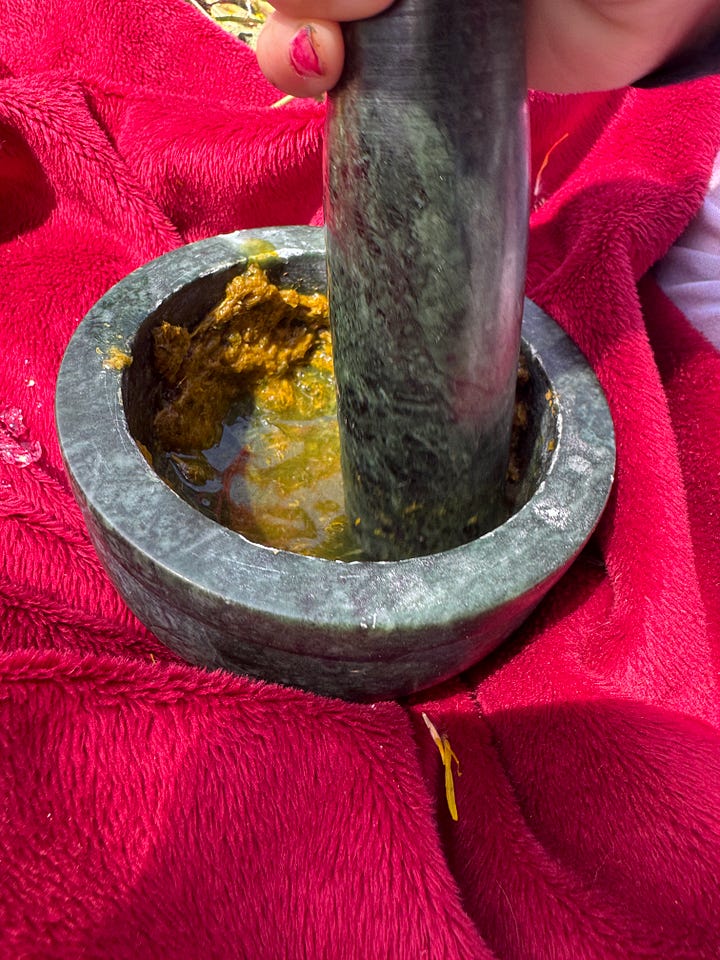
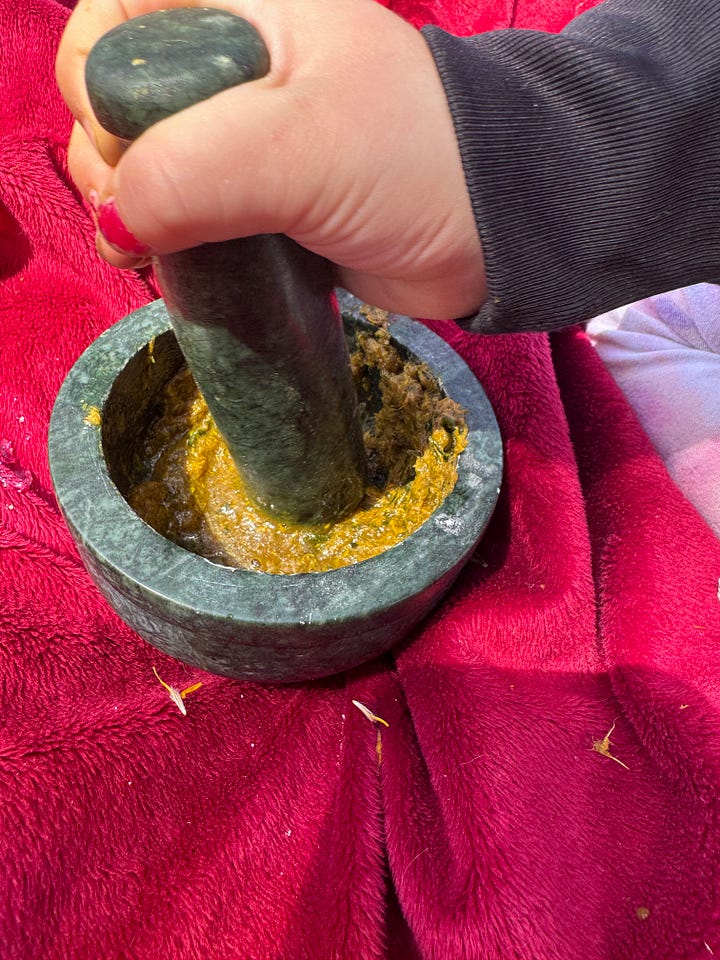
This hands-on activity provides opportunities for:
identifying dandelions
identifying parts of the plant
learning colors, or more advanced, hues
practicing patience
expressing physicality
art and individual expression
I love nature-based art projects and activities but find most tutorials daunting with a long list of instructions or requiring specialty ingredients. Let’s be real. We’re trying to engage a toddler for a span of 30 minutes with art that they will likely destroy within 24 hours anyways. The investment, both time and money, needs to be minimal.
That’s what I love about this dandelion paint. First and foremost, it’s a fun activity. It’s something you can do as part of a nature journaling practice to show reverence to the plant. It’s something you can do on a work-day when daycare was cancelled and you’re suddenly juggling kids and a laptop, trying to keep both afloat (sorry, boss, I was busy picking dandelions).
about 1/2 cup dandelions, flowers only
about 1-2 tablespoons very hot water (boiling will provide darkest pigment, but with toddlers it’s probably safer to use hot tap water)
mortar and pestle
paint brush
watercolor or heavy paper
Mash up the dandelions with the mortar and pestle until you have a moist paste. Add 1 tablespoon of hot water and mash a few more times. Add more water if needed to achieve a thin (but chunky) paste. Let sit for at least 20-30 minutes before painting with it. The longer it steeps (and the hotter the water) the darker and more concentrated the color will be.
When it’s time to paint, you could strain out the paint with a cheese cloth, or just embrace the chunky evidence of flowers in your painting. Remember: toddler art.
MagnaTile Pressed Flowers
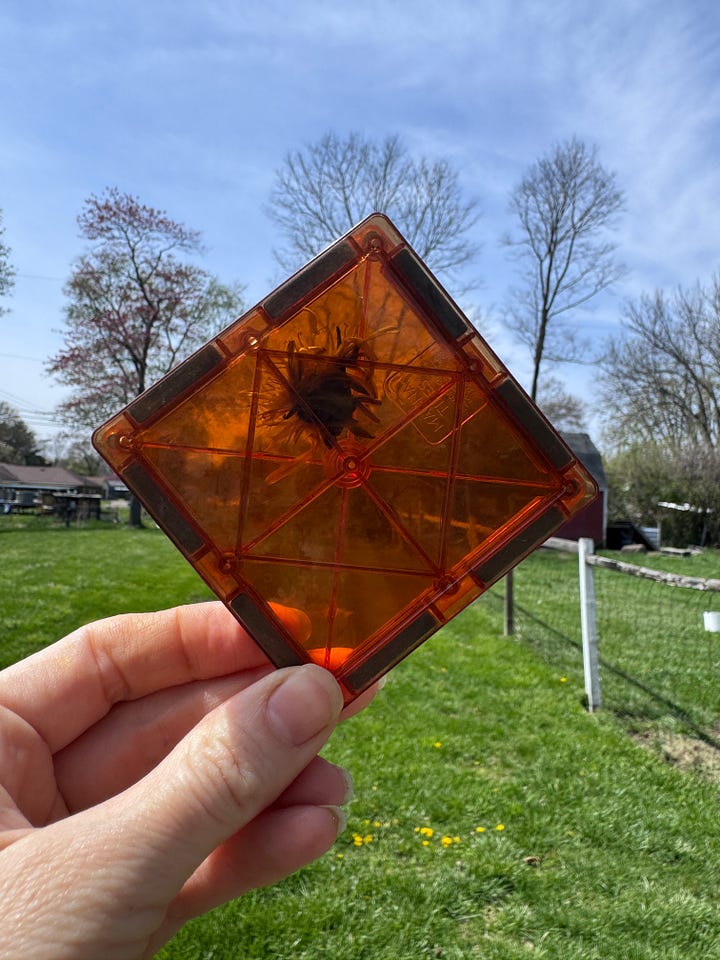

This activity will:
encourage color identification
foster a love for plants
practice motor skills, both fine and gross
This one is simple. We often spread a blanket on the grass and lay out a few snacks and toys. It’s a landing space for the kids and provides an option for quiet and individual play. MagnaTiles are great for outside play on a blanket or in the grass, and this activity of “pressing flowers” between tiles helps the kids bridge the toy or material world with their natural setting.
We simply grabbed a couple tiles and went in search of dandelions or violets and pressed them between the tiles. We gazed at them, holding them up to the sun and discussing the colors.
Dandelion & Purple Dead Nettle Salve
This activity is great for:
introducing herbal properties of plants
patience
plant identification
learning basic herbal preparations
cultivating reverence for nature (plants = medicine)
Dandelion and purple dead nettle are important spring “weeds” as they bloom and provide food for early pollinators. They’re both great for soothing skin irritations as well - something we have a lot of in the spring with skinned knees and adventurous outdoor play.
By including children in the process of collecting the flowers, infusing the oil, and making the salve we are weaving a story that helps them draw connections between plant and medicine. These connections are the threads of reverence - raising humans to respect and see nature for the power it holds.
1 pint of mixed dandelions and purple dead nettle
olive oil to cover
3 ounces coconut oil
3 ounces food-grade bees wax or candellila wax (plant-based)
Collect the flowers and rinse to remove dirt or bugs. Layout on a towel in a sunny spot to dry. The flowers should look wilted. Place in a pint jar and cover with olive oil. Let sit, shaking once a day, for about 4 weeks to infuse.
Strain the oil, composting the flowers. Add 3 ounces oil to a double boiler with coconut oil and wax. Let melt and then pour into containers - we like the cardboard lip balm containers for an easy hands-free application. Let cool - watch the appearance of the salve change as the mixture cools and hardens.
Apply to dry skin, rashes, or shallow cuts (skinned knees - do not apply to open wounds).
Color Changing Violet Lemonade
This activity helps:
Foster a love for nature
Identify colors and color interactions
Introduce basic science, depending on age
Measure
Mix
Empower children by allowing them to make and experiment
Violet lemonade is the ultimate springtime pink lemonade. The violet tea is deep purple, or even blue. The lemon juice is yellow. What color will they be when mixed? The color changing phenomenon is actually a simple acid-base reaction - the lemon juice, which is kind of sour is an acid that reacts with the pigment or colors in the flower. The result is a change of color. It feels like magic, but it’s really science!
1 pint of fresh violets (blue butterfly pea works too)
8 ounces boiling water
sweetener of choice in desired amount (1 tablespoon or so)
juice of one lemon
Rinse the flowers and cover with boiling water. Add the sweetener and stir. Let steep until it’s a deep purple/blue color, about 5 minutes. Strain and pour in the lemon juice. Watch the magic (science) happen.
Fun Alteration: you can do this with playdough instead of lemonade! Adjust your amounts to fit your playdough recipe and instead of plain boiling water, use the violet tea to mix your playdough. The cream of tartar used in playdough will react the same way the lemon juice does in the lemonade and change the color of the playdough!
Honorable Mention: Seed Bombs
If your children love being wrist deep in whatever you’re making, seed bombs will be a fun activity.
soil
clay (either powdered or air-dry)
wildflower seeds
Combine equal parts soil and clay (and water if you have powdered clay). Mix in seeds and let children mold into various shapes. Allow them to dry and throw them around - see where flowers will bloom.





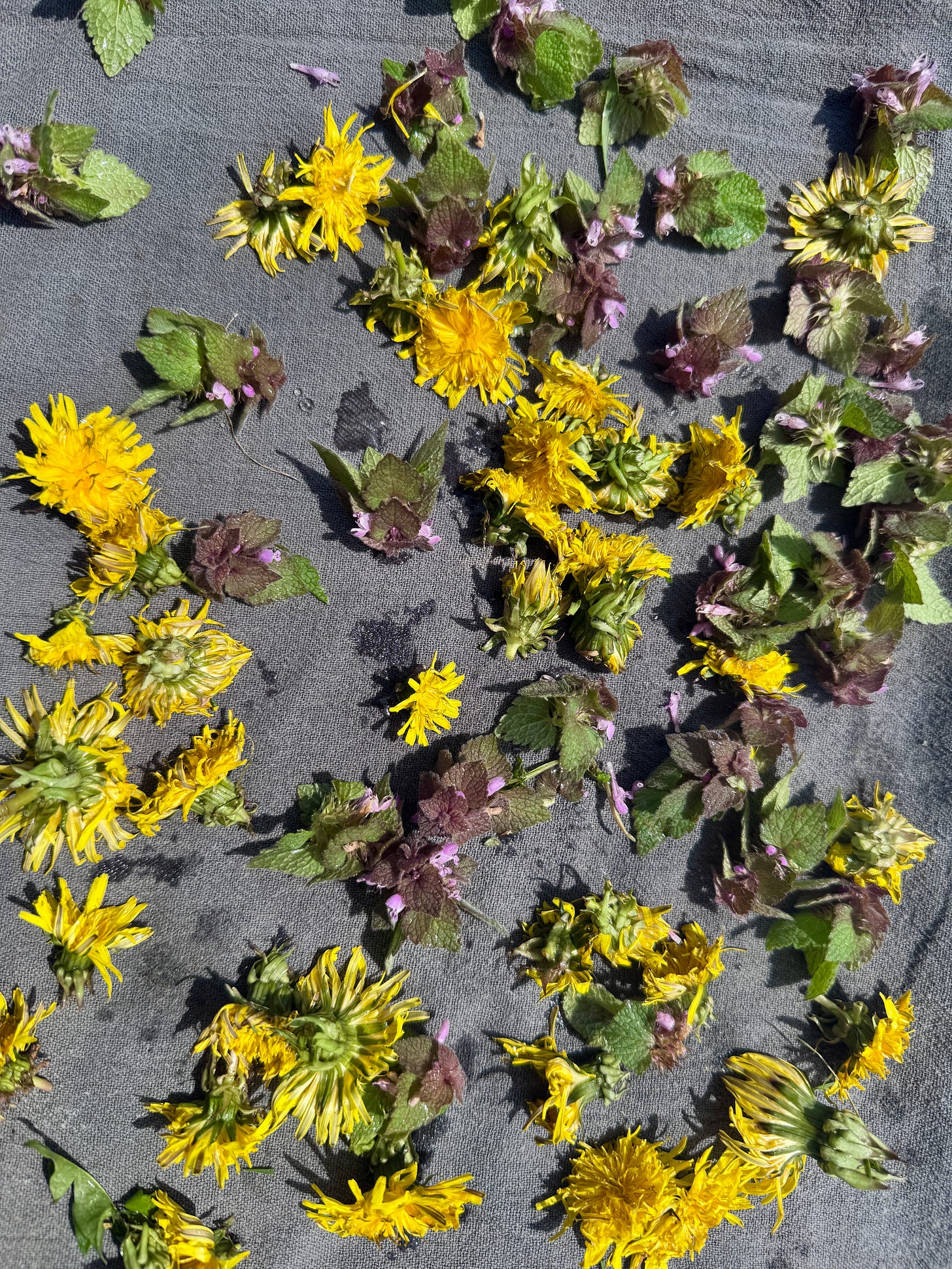
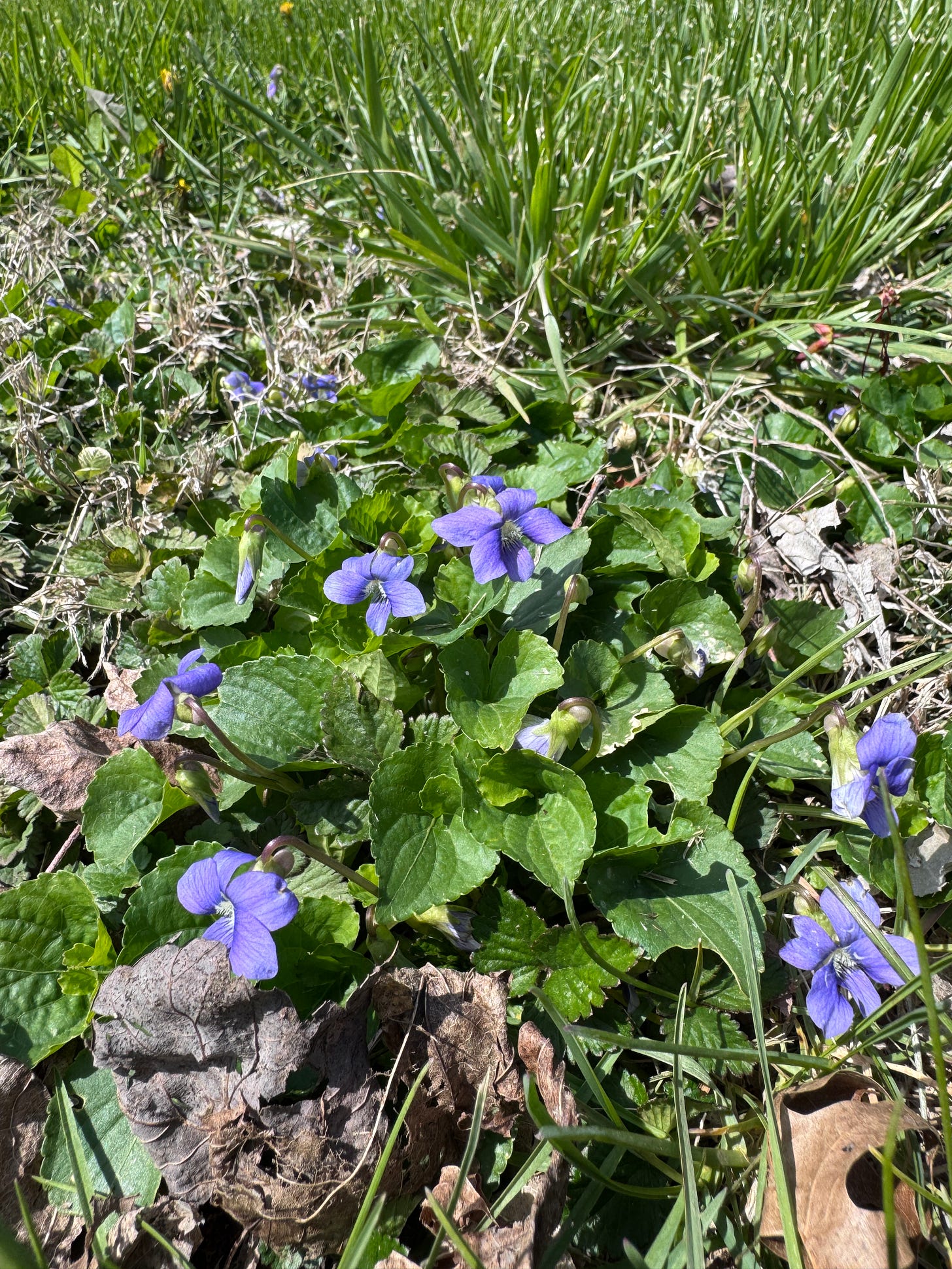
Terrific and interesting projects! 😊